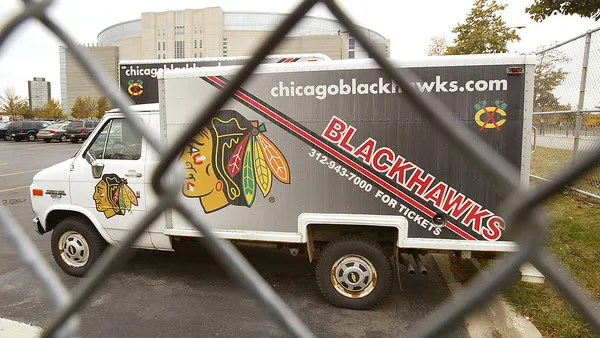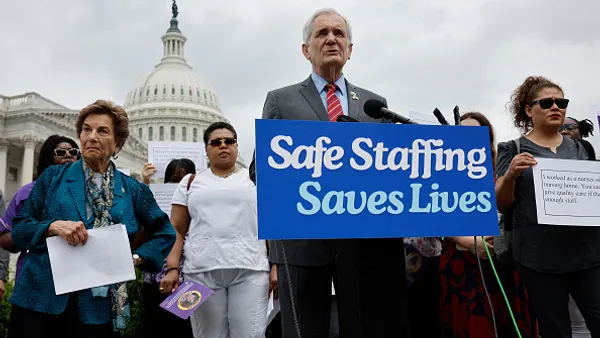Dive Brief:
- The number of American workers who belong to unions continued to decline in 2021, dropping by 241,000 to 10.3% of the total workforce, according to a new report by the Bureau of Labor Statistics (BLS).
- Last year, 12.6% of workers in construction were union members. That was a slight decrease from the 12.7% in 2020.
- The BLS also looked at the level of pay for union vs. nonunion workers, finding that nonunion workers tend to make 17% less than their union counterparts' weekly salary. For construction, that gap is higher: median weekly earnings for nonunion members in construction was roughly 31% less than the median weekly earnings of union workers.
Dive Insight:
BLS indicated some of the decreasing unionization percentages could be attributed to the disproportionate decline in the number of nonunion workers compared to the decline of union members. In 2020, many Americans lost their jobs, but more nonunion workers did than union workers.
In 2019, 12.6% of construction workers were union members — the same as 2021.
Other findings from the BLS report show:
- Including union members, 13.6% of construction workers were represented by unions — meaning they may report no union affiliation but their jobs are covered by a union or employee association contract.
- Union membership of public-sector workers (33.9%) continued to be more than five times higher than private-sector workers (6.1%).
- The decline in union membership has been steady, and 2020's artificial inflation was the first increase in the percentage of U.S. workers in a union since 2008.
Union membership for all industries has declined for decades. In 1983, the first year for which the BLS had comparable union data available, union membership was 20.1% of the workforce.
Americans' approval of labor unions is at its highest level in decades. According to a recent Gallup poll, 68% of Americans approve of labor unions, the highest approval since 71% in 1965.
In addition, across the country and across industries, workers are seeking to organize, especially since the start of the COVID-19 pandemic.
For instance, Seattle-area Teamsters are on strike, as drivers halt the flow of concrete, slowing construction projects in the region. A mediation attempt last week between the Teamsters and representatives of the employers failed to yield results.
Meanwhile, organizers at several Starbucks stores across the country have filed for elections to unionize, after Starbucks Workers United won elections at two Buffalo-area stores, Restaurant Dive reported. In Alabama, Amazon workers will vote on a union again, after the National Labor Relations Board overturned “tainted” election results and ordered the second election, Retail Dive reported.
The pandemic helped to set off this increasing push for unionization, Liz Shuler, president of the American Federation of Labor and Congress of Industrial Organizations (AFL-CIO), told MarketWatch.
"Across this country, workers are organizing for a voice on the job and millions of Americans are standing in solidarity with union members on strike. If everyone who wanted to join a union was able to do so, membership would skyrocket."















